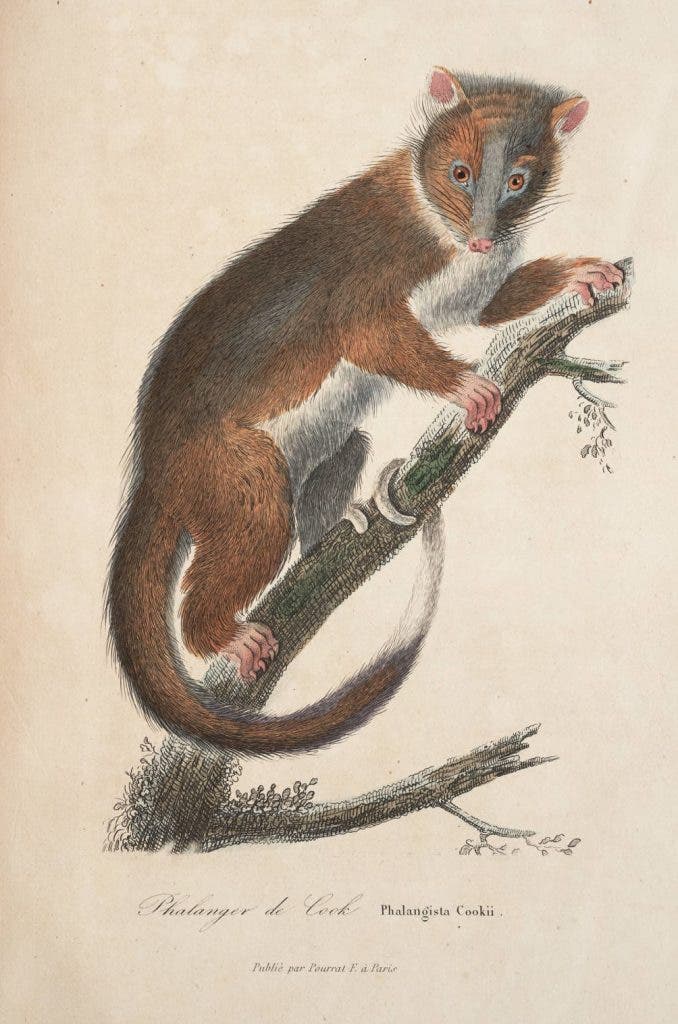Scientist of the Day - René Primevére Lesson
René Primevére Lesson, a French naval officer, surgeon, and zoologist, was born Mar. 20, 1794. Lesson was the assistant surgeon on the voyage of La Coquille from 1822 to 1825, which meant, in the tradition of the French navy, that he was also the de facto on-board naturalist. The Coquille was sent around the world, under the command of Louis Isidore Duperrey, with a mission to visit those places that had escaped the attention of the previous French circum-navigation, that of the Uranie (1817-20).
The voyage of the Coquille lasted 3 years, 1822-25, and since the crew remained surprisingly healthy for such a long cruise (no one died of scurvy, which was highly unusual, in fact, no one died of anything, which was truly remarkable), Lesson was able to wear his naturalist hat most of the time, which he did with great enthusiasm. He collected and drew hundreds of mammal, bird, fish, and invertebrate specimens from island groups scattered through Polynesia and Melanesia, as well as from New Guinea and Australia.
Lesson is best known for an observation he made in 1823, when he went ashore in West Papua and saw a bird-of-paradise in the wild. He was the first Westerner to do so. Magellan (or rather his ship) had brought back several specimens in 1521, specimens that lacked feet and bones, which gave rise to the legend that birds-of-paradise spent their entire lives in the air and never set foot on land (which of course they could not do, if they had no feet). Every other specimen that came to Europe from New Guinea in the next 300 years was similarly footless - indeed, the bird’s scientific name was Apoda. Many doubted the legend, but no one could prove it wrong, since no European had seen a bird-of-paradise in its natural habitat. Lesson not only saw birds of paradise with feet, but he brought back specimens that were bipedally endowed. The myth was laid to rest at last (third image).
The narrative of the expedition, Voyage autour du monde ... sur la corvette de Sa Majeste La Coquille, was published with remarkable speed, the first volume emerging the same year the Coquille returned, in 1825, with most of the volumes, many of them large folios, completed by 1830. Lesson was responsible for the zoology volumes, and the accompanying Atlas is one of the most gorgeous volumes of any scientific voyage ever. Many of the mammals and invertebrates were drawn by Lesson himself, and he showed a real talent for visual composition. We chose to display the Zoology Atlas in our 2009 exhibition, The Grandeur of Life, and the beautiful Portuguese man-of-war you will see there – and here (first image) was based on a Lesson painting. We add also a lovely engraving of sea anemones based on Lesson’s drawings (fourth image).
In 1839, Lesson published his own book on the voyage, with a nearly identical title: Voyage autour du monde ... sur la corvette la Coquille, containing many of his drawings that were not included in the official narrative. We exhibited this book as well in The Grandeur of Life, primarily so we could display his remarkably soulful cuscus, an Australian marsupial. Here you can see the complete cuscus (fifth image; we showed only a close-up on the exhibition page), as well as a wombat (sixth image).
Dr. William B. Ashworth, Jr., Consultant for the History of Science, Linda Hall Library and Associate Professor emeritus, Department of History, University of Missouri-Kansas City. Comments or corrections are welcome; please direct to ashworthw@umkc.edu.












